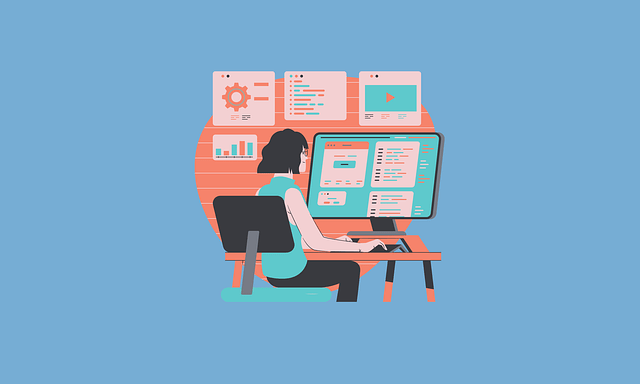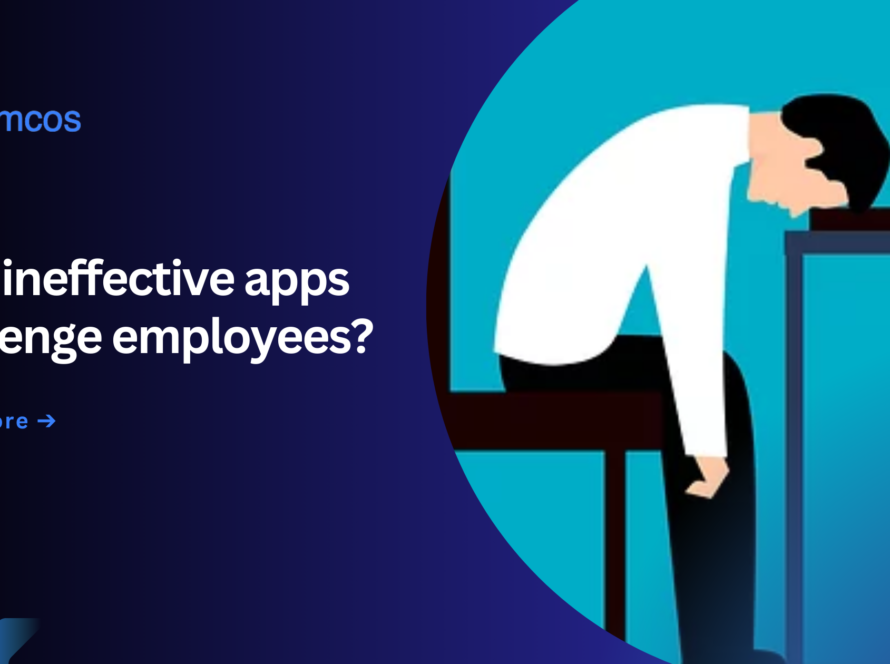Software applications have grown to become an important part of our lives, from handling personal task management in mobile applications to operating complex tasks handled by computer software. Increasing dependency on software applications demands upgrading the development process in light of this. With modern approaches, software cope with rapid technological changes and shifting user expectations by embedding advanced technology and assuring better user experiences along with enhanced security. By implementing such measures, the companies achieve growth and sustain their lead; this will keep the software applications viable and efficient in light of the constantly changing digital environment. Further, embracing modernization enhances not just functionality and efficiency but also secures a competitive environment for long-term business success.
Table of Contents

What is software applications ?
A software application is a set of programs designed to carry out certain tasks or functions for the user, from simple calculators up to very complex systems, such as ERP software. In the context of app modernization, this would mean updating such applications to the latest technological standards and user expectations. Modernization implies the integration of new technologies, improvement of user interfaces and enhancement of security. The process allows the application to stay efficient and scalable in a digital world that’s constantly in change, therefore competitive. In return, modernization could open ways to much-needed functionality, user experience and adaptability improvements that finally position software products for continued success and relevance.
The Need for Modernized Strategies for software platforms
Modernization of strategies of software platforms is imperative for owner-led businesses where the owner is usually intensely involved in the daily operations and strategic decision-making. Why?
● Fast-Moving Technology
The owner-led business might not be able to be on the bleeding edge of new technologies due to limitations in resources or time. New technologies will aid in streamlining operations, productivity and building a competitive advantage. This will include the adoption of cloud solutions that may be much easier to deploy compared to huge upfront investments, especially in better data access and collaboration.
● Increasing User Expectations
The owner usually has a direct channel to customers’ feedback and expectations. The moment these change, so does the need to evolve in software platforms supporting the operation of a business. Modernize to ensure you to provide a seamless, smooth customer experience. This is key to the survival of any business through customer satisfaction and loyalty. Introduction of easy, intuitive interfaces and responsive support systems directly touches the bottom line of your business.
● Improved Security Threats
If your enterprise is owner-led, then security threat management becomes critical. This becomes even more critical when one handles sensitive information related to customers or proprietary business data. Advance the strategies that will go towards updating your security measures regularly to help you avoid data breaches and maintain regulatory requirements that are put in place, which protect your business and your clients.
● Scalability and Flexibility
Growth and shift in demand are common features of owner-led businesses. Upgrading the software platform may provide much-needed scalability and flexibility to manage such change. For example, moving over to cloud-based platforms help scale up growing needs for data or fluctuating volumes of business with minimal changes in physical infrastructure.
● Improved Development Efficiency
Efficiency is key in owner-led businesses, where resources may be thin on the ground. Agile methodologies of development, along with CI/CD, further streamline the way in which your software platforms are updated and maintained. This equips one to react to marketplace change more quickly, operational process improvement and faster deployment of new features or fixes.
● Data-Driven Decision Making
Owners utilize the available data to make critical decisions in business. Modernizing the software platforms, through the building of advanced analytics tools, would act as a convenient way to gather more information and perform various types of analysis on the data to drive informed decisions on marketing, customer preference and improvement operations. This would directly benefit the success and growth of the business.

Essential Modernized Strategies for Transforming Software Applications
Following are some of the major modernized strategies for software applications that should be kept in mind by the developers :
1. Agile Development
Agile Development is making a software application by breaking the whole project into smaller tasks and completing them one by one in an easy and manageable manner where each task is termed as a sprint. It actually helps the developers present quality results in a very short span because it helps the development teams create software in an effective and adaptive style. This leads to flexibility, transparency and continuous improvements in software development.
2. Machine Learning(ML) & Artificial Intelligence(AI)
Basically, machine learning and AI are considered one of the most renowned technology upgrades of current business scenarios. These technologies actually make the software applications more intelligent and effective. Machine learning is a branch of artificial intelligence with the help of which software analyze a large amount of data and may reach certain decisions based on the information extracted from that data analysis. While Artificial Intelligence, on other hand, helps build software applications that understand and interact with application users in a human-like manner.
3. User – Centric Designs
Making a software application by keeping the users first could be considered one of the major strategies for software development in the modernized era. It becomes user-centric when software development goes for things such as how is the user going to interact with the application. Is this made keeping in mind the preferences of the users? Will it provide a smoother and reliable experience?. With the use of techniques like User personas, user testing, better designs, etc., software is made and tailored to fit certain requirements of the users.
4. Cloud Computing
Cloud Computing is a process through which programs and data are accessed with the use of remote servers or the Internet. It’s like having virtual space where one keeps their stuff and reach that stuff from anywhere by the help of an Internet connection. This allows large amounts of data to be used by the software applications, which scale while performing intensive computations in an efficient and agile manner. Hence, cloud computing enables business operations to streamline and move toward adopting more scalable and cost-effective infrastructures.
5. Robust Security Measures
Having really strong protection that keeps the software application safe from unauthorized access is one of the most important strategies that should be considered by the developers. Software applications, having strong measures for security, make sure that your personal information and data are completely protected from various cyber threats, data breaches and from any sort of unauthorized access that helps in gaining the trust of the users.
6. Utilize Data-Driven Insights
In the case of software applications, or more particularly in app modernization, data is a powerful tool for improvement. Advanced analytics enable the capturing and analysis of comprehensive data; this provides actionable insights into user behavior, system performance and market trends. Embedding these insights into your modernization will let you make informed decisions on feature development, marketing strategies and many other operational improvements. This data-driven approach helps in refining and continuously evolving your application to meet the demands of today’s users and also keeps it competitive in the fast-paced digital world.
7. Adopt Continuous Integration and Continuous Deployment (CI/CD)
The practice of CI/CD is based on principles aimed at smoothing the software development process. They are absolutely indispensable in successful modernization of an app. In simple form, Continuous Integration involves continuous integration of code changes into a single location, with test repetitions of new code then merging. Continuous Deployment now automates the release to production environments of these updates. Having integrated CI/CD into your application modernization strategy, you will have significantly reduced time from code changes to deployment, greatly improved code quality and reduced risks of errors. All that means higher velocity, reliable software updates that will keep your application up to date with efficiency, to stay competitive in today’s fast digital pace.

It is only during the time of software development that developers employ different measures and strategies, such as Agile development, ML/AI, user-centric designs, robust security measures and cloud computing, which bring about an unmatched impact in addition to great improvements on software applications. This not only beautifies the digital business landscape but also drives innovation and efficiency, with businesses well-placed to jump forward in pursuit of growth and success. Such development also ensures increased customer satisfaction while smoothing operational workflows and reinforcing the competitive advantages for any company.
How does Himcos help?
Himcos provides Business Software Modernization services. Our team isn’t just skilled, you get the best minds tackling your modernization project, ensuring exceptional quality and results. Our experts help improve performance, reduce costs, enhance security and foster innovation providing our clients with scalable, secure and high performing applications.



